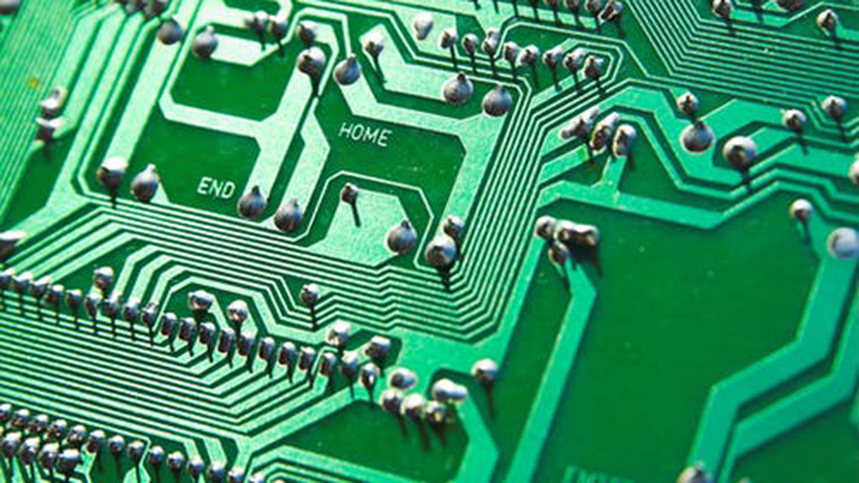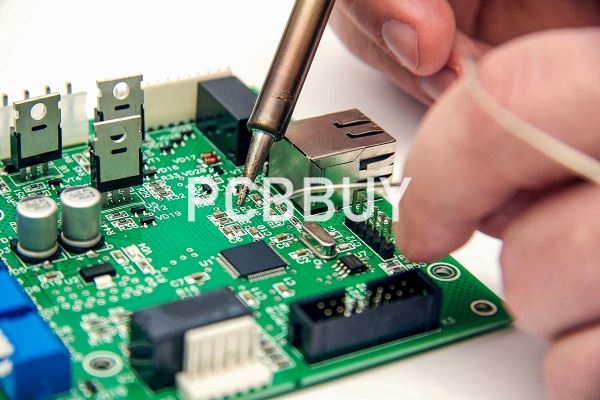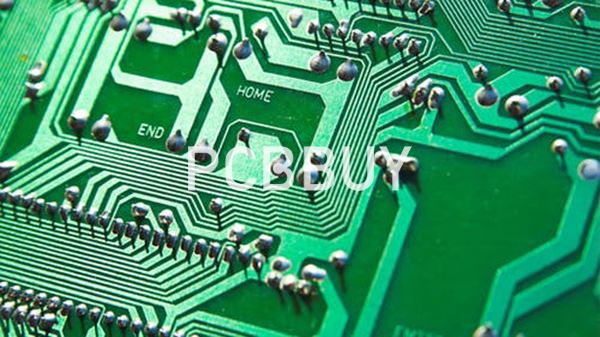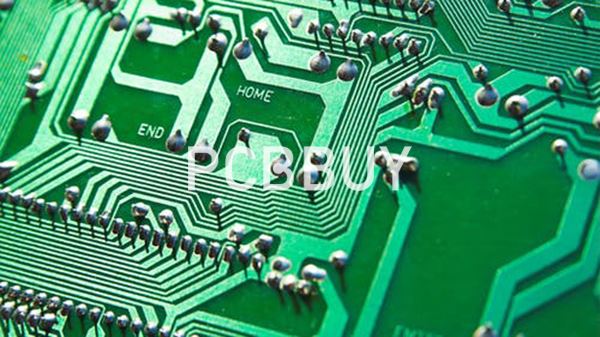What is Copper Clad Laminate Used for PCB Manufacturing Process?
By:PCBBUY 11/12/2021 09:27

The substrates used in PCB are mainly divided into two categories: organic substrates and inorganic substrates. Among them, the organic substrates are made of several types of materials which refer to the reinforcing materials, such as glass fiber cloth, fiber paper, glass felt, etc. These reinforcing materials are impregnated with resin adhesive and dried, then covered with copper foil at high temperature and high pressure. This type of substrate, known as copper clad laminate (CCL), is the main material used to make PCB.
Are you curious about copper clad laminate PCB? If you are searching for more about the knowledge of copper clad laminate PCB, please check and read the content below for more information.

What are the standards of copper clad lamination?
ASTM D1867 defines the standard specification for copper clad laminates that manufacturers use for making printed circuit boards. Covering twelve grades of copper clad laminates, ASTM D1867 requires the laminates to meet peel strength at elevated temperatures, crosswise and lengthwise flexural strength, flammability ratings, volume resistivity, water absorption, dielectric breakdown, dissipation factor, and permittivity. The laminates must further conform to tests for blistering, warp, and twist.
Manufacturers of copper clad laminates follow the IPC-4101C as their manufacturing standard, and the IPC-IM 650 for testing the copper clad laminates they fabricate.
What are the materials of copper clad laminate?
Copper Foil
Copper foil is a cathodic electrolytic material deposited on a thin, continuous layer of metal foil on the base of the circuit board. It is easily bonded to an insulating layer, accepting a printed protective layer, and corroded to form a circuit pattern.
Prepreg:
A prepreg (from pre-impregnated) is fiberglass impregnated with resin. The resin is pre-dried, but not hardened, so that when it is heated, it flows, sticks, and is completely immersed. Prepreg are thus fiberglass strengthened by an adhesive layer (similar to FR4 material). The name of each prepreg derives from the type of fiberglass used.
The prepreg types of different suppliers vary in thickness; in addition there are the versions "SR" Standard Resin, "MR" Medium Resin "and" HR "High Resin, depending on the resin content. The best possible material is used depending on the desired final thickness, layer structure or impedance. The mentioned thicknesses are thus to be considered only as examples.

What are the applications of copper clad PCB?
· General electronic circuit board applications
· High-speed communication applications (4G-LTE, 5G base stations / Radar applications)
· Automotive-ADAS_Radar uses
· Avionic-Radar uses
Applications range from communications, automobiles, aerospace, and more. 5G is an abbreviation for "5th Generation" and means "5th Generation Mobile Communication System."
This is the next generation of 4G (LTE-Advanced), and is fast enough to download a 2 hour movie in seconds.
With the widespread use of 5G, it may be possible not only to improve the communication speed and reduce delays, but also to realize things that were not possible with conventional communication speeds.
What is the best copper clad PCB?
Size
Since the copper clad laminate is the base material of a PCB, they have to meet some size requirements accurately as per the desired end design. All parameters are taken under careful consideration including width, length, diagonal deviation, and warpage. All these requirements have to be met to be exact in order for a successful application.
Appearance
There is a wide range of possible issues that can occur on the copper foil due to unexpected elements during the manufacturing process. Some of these issues could be scratches, dents, resin points, pinholes, wrinkles, bubbles, and more. If any of these issues occur, this will definitely lead to the poor performance of the copper-clad laminate and it will then reflect on the printed board.

Electric Performance
The electric performance has to be carefully designed as this is one of the essential aspects. Again, here we have some strict requirements including dielectric loss tangent (Df), dielectric constant (Dk), surface resistance, insulation resistance, volume resistance, arc resistance, electric strength, and Comparative Tracking Index (CTI).
Environmental Performance
It has to be ensured that simple requirements such as water absorption and corrosion resistance are met. Otherwise, the production process may encounter serious failures in performance.
Chemical Performance
The chemical performance of copper-clad laminate is extremely important and it has to meet the strict requirements for flammability, Tg, chemical regents resistance, Z-axis coefficient of thermal expansion (Z-CTE), and dimensional stability.
Physical Performance
Requirements related to the physical performance include Peel Strength (PS), dimensional stability, bending strength, heat resistance (with thermal stress, Td, T260, T300, T288), and punching quality.
Industry Category











